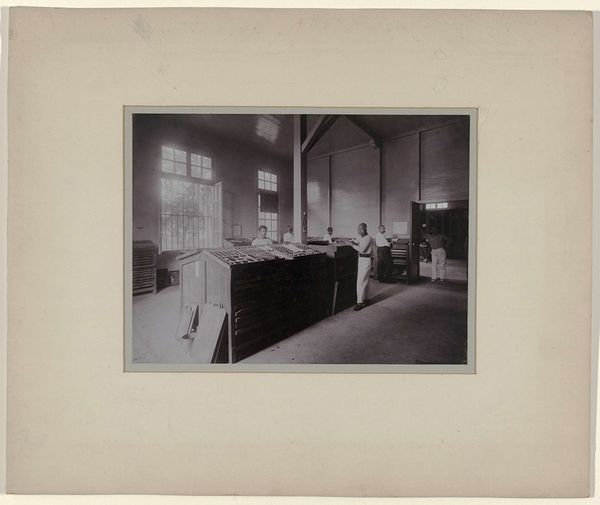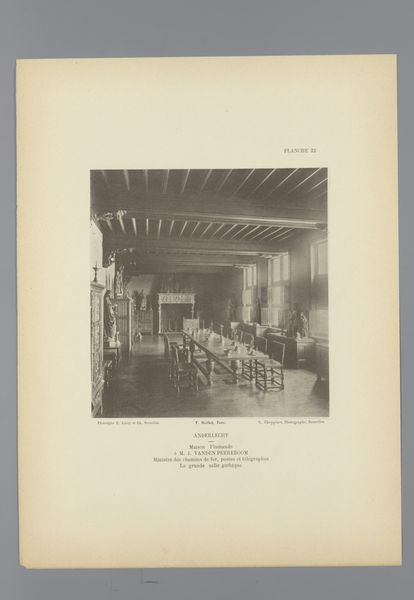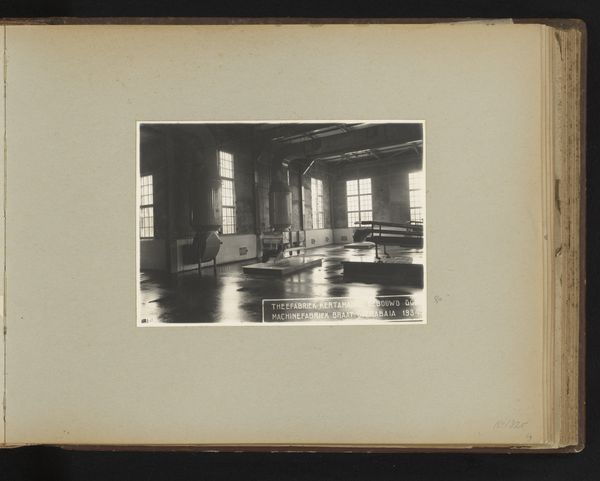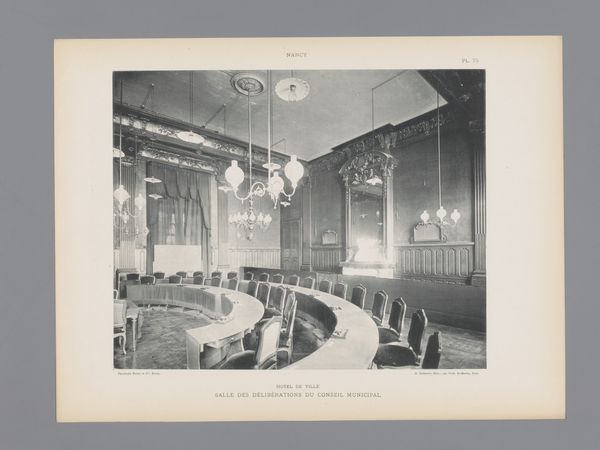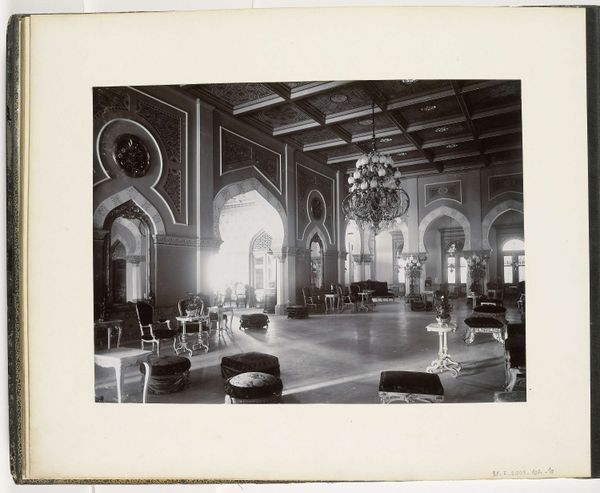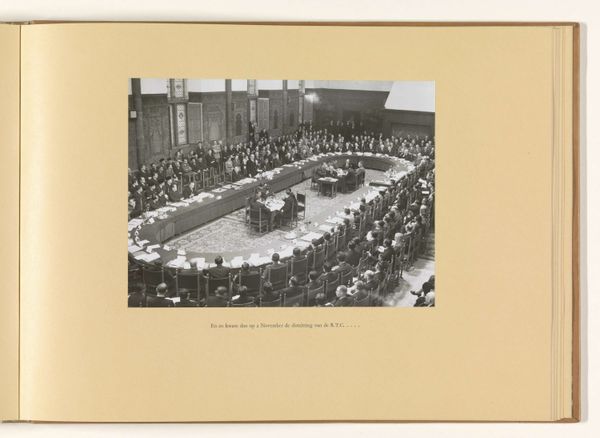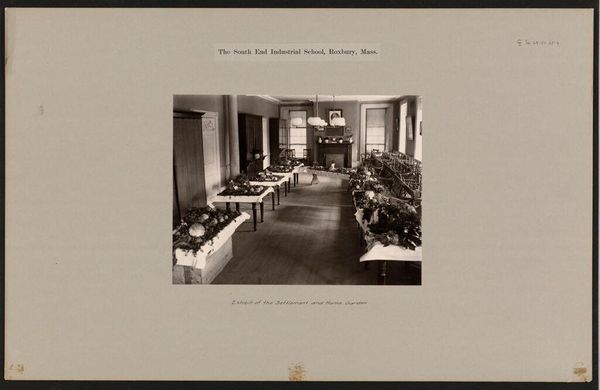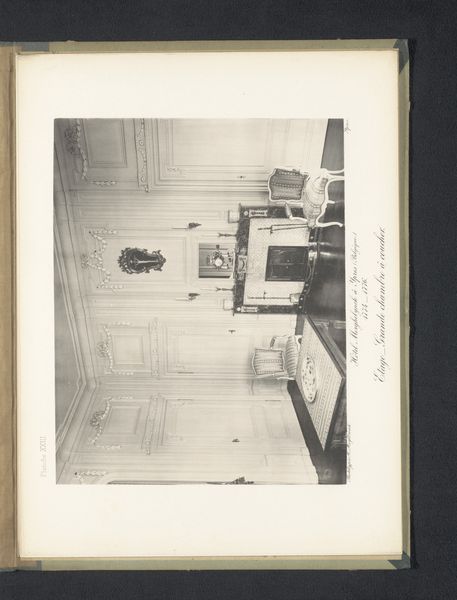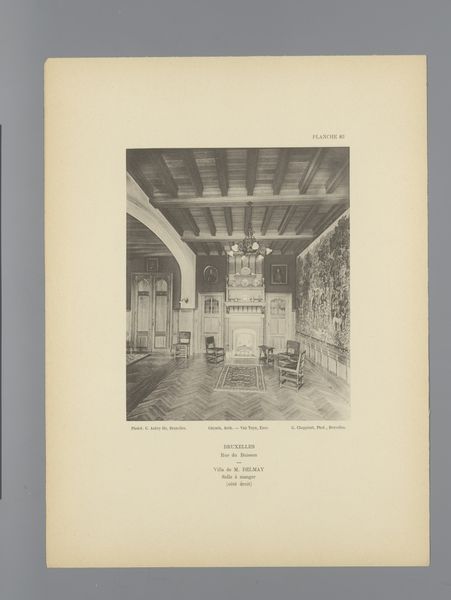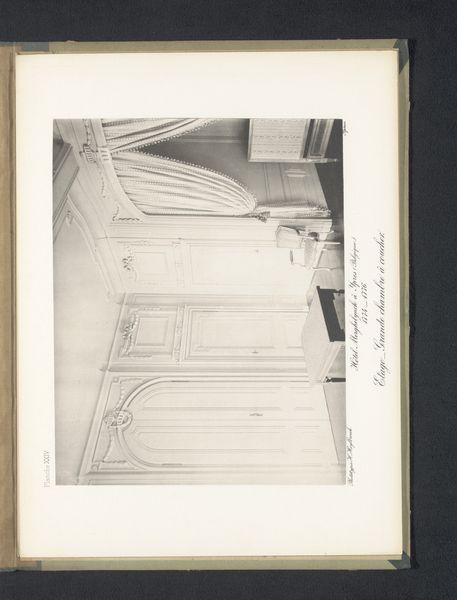
De laatste hand wordt gelegd aan de ronde tafel, waaraan zulke belangrijke besluiten werden genomen 1949
0:00
0:00
print, photography, gelatin-silver-print
# print
#
photography
#
gelatin-silver-print
#
cityscape
#
paper medium
#
modernism
#
realism
Dimensions: height 169 mm, width 237 mm, height 292 mm, width 400 mm
Copyright: Rijks Museum: Open Domain
Editor: We are looking at "De laatste hand wordt gelegd aan de ronde tafel, waaraan zulke belangrijke besluiten werden genomen" which translates to "The finishing touches are being put on the round table at which such important decisions were made" a gelatin-silver print, a photograph, from 1949. What strikes me most is the immense scale of the table. It dominates the composition. How do you interpret this photograph? Curator: From a formalist perspective, the photograph’s power lies in its strategic use of space and light. The photographer uses the dramatic lines and shadows to emphasize not just the scale but the implied importance of the setting. The high vantage point flattens the figures, further exaggerating the room's volume, don’t you think? The geometry within is striking, wouldn't you agree? The converging lines draw the viewer's eye deeper into the scene, leading us toward that stage and the geometric patterning in the lights. The artist, however, provides very little detail about the actual participants; this image relies on its architectural and scenographic elements to evoke power and gravitas. Editor: Yes, I hadn't thought about it that way, the figures are a key element for establishing the immense space, and by doing so it evokes such feelings in me. I see the perspective much differently now. Are those strong converging lines intentional, like they’re drawing our attention to some focal point in the back? Curator: Indeed. Notice also the tonality – the range of grays emphasizes the textures of the architecture and objects, while softening the stark contrast to invite contemplation. A bright scene, yet muted tones that give a sense of reverence, not unlike viewing the interior of a cathedral, where similar power dynamics reside. Does that suggest any parallels with sacred space? Editor: I didn't pick that up myself but now I can completely understand your formalist perspective here. So it really is a study in composition, geometry, light, and how those elements convey significance more than any contextual reference alone? Curator: Precisely. The photo relies entirely on its visual language, its internal formal elements. Form dictates our understanding, not necessarily historical or narrative meaning, which someone of my ilk can appreciate more thoroughly. Editor: This has helped me learn that sometimes it's valuable to look beyond the story being told to find greater meaning from visual form.
Comments
No comments
Be the first to comment and join the conversation on the ultimate creative platform.
